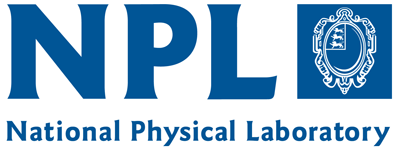|

Karlsruhe Institute of Technology (KIT) is a higher education and research organisation with about 8000 employees, 18,500 students, and a total annual budget of about 700 million Euros. KIT was established on 01/10/2009 as merger of Universität Karlsruhe (founded in 1825), one of Germany’s leading research universities, and Forschungszentrum Karlsruhe GmbH (founded in 1956), one of the largest national research centres in the Helmholtz Association.
|
|
Read more...
|
|

CEA (Alternative Energies and Atomic Energy Commission) is a French government-funded technological research organisation. A prominent player in the European Research Area, it is involved in setting up collaborative projects with many partners around the world. The CEA is largely involved in the hydrogen and fuel cell field with more than 350 permanent employees belonging to specific laboratories dedicated to hydrogen safety (in the site of Saclay close to Paris) and to hydrogen production, transport, distribution and application in Fuel Cell (in the site of Grenoble). |
|

The University of Ulster (UU) is a key provider of research and education/training in the field of safety of hydrogen and fuel cell (HFC) technologies. The thrust in research is on the development of physical models and large eddy simulations (LES) of the whole spectrum of phenomena: releases and dispersion, spontaneous ignition and fires, deflagrations and detonations, etc. The World’s first postgraduate course in hydrogen safety, i.e. MSc in Hydrogen Safety Engineering, is established in 2007. Since 2008 organises International Short Course and Advanced Research Workshop series “Progress in Hydrogen Safety”. |
|

Institutt for Energiteknikk (IFE) (http://www.ife.no) established in 1948 is Norway’s national research centre for energy technology. The research activities cover petroleum, renewables and nuclear energy. The contribution to the project will come jointly from two departments at IFE (Physics and ENSYS). The Physics Department at IFE is the national centre for materials research using neutron scattering techniques, and the research reactor JEEP II is an important tool for characterization of novel materials. |
|

The Health and Safety Laboratory (HSL) is part of the UK Regulatory Authority, the Health and Safety Executive (HSE) and carries out risk assessment, basic and applied research, standardisation, legislation and forensic support services. |
|

European Commission, Directorate-General Joint Research Centre, Institute for Energy and Transport, Petten (JRC)
The Institute for Energy and Transport (IET) is part of the Directorate General Joint Research Centre (JRC) of the European Commission. Its mission is to provide support to EU policies and technology innovation to ensure sustainable, safe, secure and efficient energy production, distribution and use and to foster sustainable and efficient transport in Europe. The Institute provides its expertise to different stages of European policy-making process in the energy area, on issues related to environmental protection, safety and security of the citizens, and sustainable development. It collaborates with partners from the EU Member States and beyond and carries out research (laboratory and desk top) in the fields of clean and sustainable energy addressing both nuclear and non-nuclear domains.
|
|
Read more...
|
|

The Solid Oxide Fuel Cell (SOFC) infrastructure in JÜLICH is exceptional. The research group is one of the largest in Europe and the world, and possesses major research facilities in line with that scaling. The SOFC specific facilities (distributed across 5 specialised institutes) are backed by world class engineering, chemical analysis, (super) computing and other relevant services from Jülich facilities. JÜLICH probably produces more scientific publications in the field than any other single-site organisation – this results from the scale of the infrastructure and the number of experts employed in the field. Significant competence (exceeding critical mass) is maintained in all relevant research areas from very fundamental materials development through to the design and construction of prototype, pre-commercial systems. In addition to the internal research programme and cooperation projects (German, EU and international), contract commercial research is carried on in the field on behalf of companies such as BMW and ElringKlinger, but also SME’s. Technology transfer is a core mission of JÜLICH.
|
|
Read more...
|
|

The Paul Scherrer Institute (PSI) is a multi-disciplinary Swiss federal research centre for natural sciences and technology. In national and international collaboration with universities, other research institutes and industry, PSI is active in solid state physics, materials sciences, elementary particle physics, life sciences, nuclear and non-nuclear energy research, and energy-related ecology.
|
|
Read more...
|
|

The Porous Media Group (PMG) of NCSRD, is based on a collaboration between the Institutes of Physical Chemistry, Nuclear Technology & Radiation Protection and Materials Science of NCSR “Demokritos” (http://www.demokritos.gr), the largest multidisciplinary research facility in Greece. The team, comprising of 10 specialised scientists, holds a well-established position in the field of synthesis and characterisation of nanostructured materials for environmental, energy and industrial applications with emphasis on inorganic and hybrid porous media.
|
|
Read more...
|
|

Founded in 1308, the University of Perugia is currently a modern, multi-campus educational institution whose primary aim is to provide the highest quality degree programmes and advanced scientific research and development. More than 35.000 students are enrolled and 1200 teaching staff members are supported by more than 1000 administrators. A wide variety of degree programmes are offered in 11 faculties and the whole structure is further enhanced by 29 Departments. A multi-cultural environment has significantly grown in recent years: more than 1300 international students are enrolled on full degree courses and around 450 students arrive every year on exchange programmes. Unipg boasts around 400 international agreements (ex. LL programme, joint degree programmes). |
|

ENEA is one of the largest scientific and technological state-owned Italian institutions (with about 3200 employees) with a specific mission in applied research activities, technology transfer and dissemination of innovation to companies, support to regional and national administration in developing programs and strategies. In these fields many programs/projects on advanced materials, electrochemistry, fuel cells and hydrogen technologies, as well as on bio-energy and bio-fuels production and utilization, have been and are presently carried out, also in co-operation with industry, academic institutions and research organizations at national and international (mainly EU) level. Nearly half of ENEA’s approximately 3200 employees are researchers and engineers operating in ten research centers located across Italy |
|

BAM is a scientific authority of the German Federal Government in the domain of the minister for economy. Its purpose is to do safety and reliability oriented work (research, approvals and certifications, advice, participation in standards etc.) for the benefit of the economy. Hydrogen is part of BAM work on chemical safety, enclosures for dangerous goods, analytics, materials research (metallic, organic, ...), non- destructive testing and others. There is a special committee to bundle the work and to exchange information among the departments. |
|

FUNDACIÓN TECNALIA RESEARCH & INNOVATION (TECNALIA) will be, from the 1st of January, 2011, aprivate,non-profitand independent research organisation resulting from the mergerof eight research organisations: Fundación Cidemco, Fundación ESI-European Software Institute, Fundación European Virtual Engineering, Fundación Fatronik, Fundación Inasmet, Fundación Labein, Fundación Leia and Fundación Robotiker.
|
|
Read more...
|
|

The University of Pisa was officially established in 1343, although a number of scholars claim its origin dates back to the 11th century. The University of Pisa is a higher education and research organisation with about 3000 employees, 55,000 students, and a total annual budget of about 400 million Euros. The Department of Mechanics, Nuclear and Production Engineering (DIMNP) of the University of Pisa has a 25 years standing experience in the field of Hydrogen Risks (theoretical, code development and experimental) |
|

Pro-Science Gesellschaft für wissenschaftliche und technische Dienstleistungen mbH was founded in 1999 and is a SME science and research company in Germany. Its permanent staff consists of 6 engineers and scientists that have gained together more than 100 person-years of experience in hydrogen safety research. |
|

The National Physical Laboratory (NPL) is the UK's National Measurement Institute and sits at the heart of the UK's metrology, calibration and standards network. NPL has 6 years of experience in PEMFC research, focusing on in situ measurement, fuel cell modelling, catalyst characterisation at the nanoscale and durability testing. NPL's fuel cell research programme is underpinned by world-leading expertise in temperature and humidity measurement, trace analysis of gas contaminants, electrochemistry and materials modelling. Close links with industry are maintained through an Industrial Advisory Group, which includes companies such Johnson Matthey and Intelligent Energy, and participation in standards committees such as BSI GEL 105 (Fuel Cell Technologies) and ISO TC158 (Gas Analysis). NPL collaborates actively with the fuel cell industry through joint research projects sponsored by the UK Technology Strategy Board and with academia through postdoctoral, PhD and EngD projects with Imperial College London, University College London, the University of Surrey and Trinity College Dublin. |
|

SINTEF is Scandinavia’s largest independent non-profit research institution and affiliated to the Norwegian University of Science and Technology (NTNU). It is a multidisciplinary contract research organisation that performs research and development in technology. SINTEF has more than 2100 employees, and had a total turnover of 330 M€ in 2009. SINTEF Materials and Chemistry is a division within the SINTEF Group with about 400 employees, and around 30 associated professors, covering fundamental and industrial research related to materials and processes.
|
|
Read more...
|
|

VTT Technical Research Centre of Finland is an impartial expert organisation. In the field of fuel cell technology and gasification related issues VTT is one of the leading research institute in the Nordic countries. VTT research supports industry product development by maintaining a development platform comprising a large selection of research facilities, a selection of developed modelling tools and know-how encompassing different technologies throughout the entire business chain.
|
|
Read more...
|
|

EMPA, Swiss Federal Laboratories for Materials Science and Technology, is an interdisciplinary public research institution with ca. 800 employees within the ETH domain. Research & development concentrates on various strategic focal areas, among them Materials for Energy Technologies. This includes Photovoltaics, Fuel Cells, Thermoelectricity, Batteries and Supercaps. The Laboratory “Hydrogen & Energy” @ Empa, addresses scientific questions and technological problems from hydrogen synthesis, hydrogen in solids to hydrogen as an energy carrier as well as applications like catalytic combustion of hydrogen. |
|